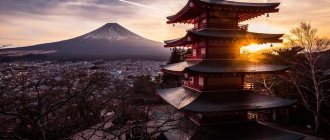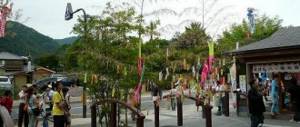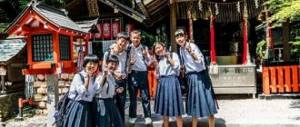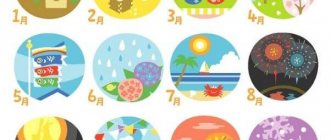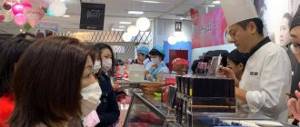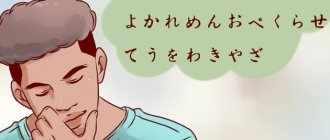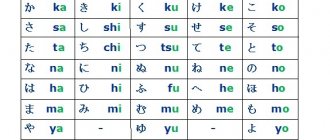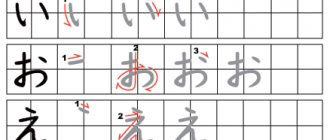It's the season for taiko sounds, late-night food stalls, yukata and goldfish games: yes, it's matsuri time!
Summer in Japan brings a lot of creative things to do to help you brave the hot weather - watermelon and soda, kakigori, matcha, dancing and yukata are a few of them. But there is only one place where you can enjoy them in true Japanese style - the summer matsuri night that attracts tourists who decide to go on holiday to Japan in June, July or August.
While there are many unique festivals across the country, here are our top ten festivals in Tokyo and other parts of Japan! Stop waiting, it's time to buy a tour to Japan and plunge into the Matsuri spirit!
Fireworks Festival on the Sumida River (Tokyo)
Rumor has it that the first festival took place in 1733. The Sumida River Fireworks Festival is one of the most popular (and crowded) summer festivals in Tokyo. With a history of nearly four centuries, it survived the Meiji Restoration and continued to be held until the world wars. The festival was reinstated in 1977 and celebrated its 40th anniversary in its current form in 2017. Visitors will be treated to a spectacular display of 22,000 fireworks, but be prepared - nearly a million people attended the event last year, so expect large crowds!
When: July 29, 2021, 19:05 – 20:30;
Where: Sumida River, Sumida-ku, Tokyo;
How to get there: the nearest station to the 1st venue: Asakusa or Honjo-Azumabashi, the closest station to the 2nd venue: Kuramae or Ryugoku.
Shinjuku Eisa Matsuri (Tokyo)
Born on the island of chinsuko and brown sugar, Okinawa's dance and music culture has always been distinct from that of the mainland, and Eisa Matsuri was no exception. Traditional costumes, drums and dances will look and sound different. The origin of the name is unknown, but one theory is that it came from an exclamation used in Ace's original song, "ensaa". This year will mark the event's 44th anniversary, and organizers expect close to a million people to join in the fun!
When: July 29, 2021, 12:00 – 20:00;
Where: Shinjuku-ku, Tokyo;
How to get there: Shinjuku Station West Exit.
Fukagawa Matsuri (Tokyo)
The Fukagawa Festival, officially known as the Fukagawa Hachiman Matsuri, is one of the three great festivals of Edo along with the Kanda Matsuri and the Sanno Matsuri. The Fukagawa Festival is held at the ancient Tomioka Hachimangu Shrine in the Koto district. Since 1642, the festival has featured a procession of mikoshi (portable shrines) where 120 mikoshi are paraded through local streets while spectators splash water on the participants.
When: August 11-15, 2021, 9:00-21:00;
Where: Tomioka Hachimangu, 1-20-3 Tomioka, Koto-ku, Tokyo;
How to get there: Monzen-nakacho Station, Exit 1.
Owara Kaze no Bon Festival, Toyama
This festival always takes place in the first three days of September. It may be a little more difficult to get to than some of the other destinations on our list, but we're sure you'll think it's worth it. If you're looking for something similar to a traditional festival, look no further, the Owara Kaze no Bon festival is what you're looking for. You can join in prayers to appease the gods, as well as avoid natural disasters and ensure a healthy harvest in the coming year. With their unique hats, colorful clothing and amazing dancing, you'll quickly become immersed in the atmosphere.
Owara Kaze no Bon Festival
Address : 2898-1 Yatsuomachi Kamishin-machi, Toyama-shi, Toyama-ken.
Website : https://www.toyamashi-kankoukyoukai.jp/en/?tid=201268
Opening hours : September 1-3: 19:00 onwards
Price : Admission is free.
Azabu-Juban Matsuri
This festival is officially known as Azabu-Juban Norio Matsuri. "Norio" is translated as "summer nights" according to many dictionaries, but upon closer examination, the more accurate definition is: "to avoid the heat and find coolness." 300 thousand participants of this “trend” festival (most of whom are young people) gather here for the sole purpose of overeating. Stalls sell regional dishes from all over Japan, from the northern island of Hokkaido to southern Okinawa. The Bon Dance in the evening is also a must-see event for travelers planning a summer holiday in Japan.
When: August 26-27, 2021, 15:00-21:00;
Where: Minato-ku, Tokyo, Azabu-Juban shopping area;
How to get there: Azabu-Juban station, exit 4.
Daruma Fair
Jindai-ii Temple celebrates the beginning of spring on March 3rd or 4th. On this day there is a fair of Daruma - tumbler dolls, personifying the deity who gives happiness. If anything, the deity's name is Bodhidharma. The dolls are painted bright red, they have no legs or arms, only a round shape. They are sold with unpainted eyes.
According to tradition, the person who bought the Daruma must paint them himself, but for a reason. First you need to set a goal and paint one eye, and the second only when the goal is achieved. There are many shops with dolls, so be sure to choose the most attractive doll for you.
Koenji Awa Odori (Tokyo)
Originating in Tokyo approximately 56 years ago, the festival is now considered one of Tokyo's largest and most famous summer events of its kind. With 10,000 dancers walking through the streets of Koenji, the small area manages to attract about a million visitors every year. It is crowded, but the experience of such unbridled fun is priceless!
When: August 26-27, 2021, 17:00-20:00;
Where: Sugunami-ku, Tokyo, Koenjiminami 2nd, 3rd and 4th chome, Koenjikita 2nd and 3rd chome
How to get there: Koenji Station.
Soma Nomaoi (Fukushima)
Known for its horse breeding, the Soma region in Fukushima Prefecture hosts the annual 1000-year-old Soma Namaoi Festival. It is organized by three different shrines in the area - Ota, Odaka and Nakamura. The highlight of this festival is the recreation of a battle scene from the turbulent Sengoku period in Japan. Clad in heavy armor and wielding katana swords, several hundred samurai horsemen engage in battle to capture the 40 sacred flags.
When: July 29-31, 2017;
Where: Nomaoi Gyuretsu and Hibarigahara Field, Soma, Fukushima;
How to get there: JR Haranomachi Station.
Aomori Nebuta Matsuri (Aomori)
The Aomori Nebuta Matsuri, or simply Aomori Nebuta, is one of the three largest festivals in the Tohoku region. The word "nebuta" refers to giant paper platforms made in the shape of terrifying warriors. According to legend, the commander Sakanoue no Tamuramaro placed giant lanterns depicting warriors and monsters on the top of the hills to frighten the enemy army. Nowadays, at festivals, dancers wear a unique outfit (which can be described as a kimono with a fruit basket as a headdress) called "haneto" and invoke "rassera" by performing wild dances around the floats. One of the largest in the country, this matsuri should be included in the list of must-see festivals for travelers purchasing tours to Japan in the summer.
When: August 2-7, 2021, 19:10-21:00 (August 2-6), 13:00-15:00 and 19:15-21:00 (August 7);
Where: Aomori City Hall;
How to get there: JR Aomori Station.
Public holidays in Japan
Officially, there are 15 public holidays in Japan. National holidays in Japan include: New Year (January 1), Coming of Age Day (January 15), Founding Day (February 11), Vernal Equinox Day (March 21), Greenery Day (April 29), Constitution Day (May 3), Rest Day (May 4), Children's Day (May 5), Day of Honor for the Elderly (September 15), Autumnal Equinox Day (September 21), Sportsman's Day (October 10), Culture Day (November 3), Labor Day (November 23), Emperor Akihito's birthday (December 23).
In Japan, in addition to state ones, a large number of religious and traditional holidays are celebrated, and all kinds of local festivals are also held. Let's consider the most significant and vibrant holidays.
Sendai Tanabata Matsuri (Miyagi)
Tanabata, literally meaning "evening of the seventh", originates from the Chinese festival of Qixi, which celebrates the annual meeting of a young shepherd and a weaver maiden, known in Japan as Orihime and Hikoboshi. While Tanabata holidays are celebrated throughout Japan, the Sendai Tanabata festival is the most popular, with nearly two million tourists flocking to see the thousands of wish cards decorating the bamboo trees. This is a breathtaking sight and a great opportunity to spend a bright and eventful holiday in Japan!
When: August 6-8, 2021, 10:00-22:00 (August 6-7), 10:00-21:00 (August 8). Fireworks August 5, 2021 19:00-20:30;
Where: Kotodai Park (Central Sendai and nearby shopping areas);
How to get there: JR Sendai Station.
Kanto Lantern Festival. Akita Prefecture
Kanto is a special bamboo pole 12 meters long, on which 46 paper lanterns with candles are installed. The weight of such a pole is about 50 kg. For children there is a 5 kg pole with 24 lanterns, 12 meters long.
A grand procession of lamplighters passes through the city, ritually cleansing it of enemies and diseases. The people who are trusted to carry the kanto are skilled professionals who demonstrate amazing acrobatic feats. They place heavy poles on their palms, head and forearms.
In Japan, regular competitions are held for such craftsmen, whose demonstration performances are held at the festival.
It is surprising that until now only candles are lit in constructions, and not electric bulbs, which requires maximum concentration from the performer - the lanterns are paper, and the possibility of ignition from a gust of wind is quite high. For safety reasons, special nets are installed above the spectator seats, and acrobats have to show all their skills to make the show successful.
Kyoto Gozan Okuribi (Kyoto)
Gozan no Okuribi (literally "five mountain farewell lights"), or better known in Kyoto as Daimonji, is the summer equivalent of Halloween. During the festival, families in Japan prepare their homes to welcome the spirits of their ancestors, and on the third day, giant ritual bonfires are lit around the city of Kyoto in the shape of the five Chinese characters - Daimonji ("big" or "great"), Muo-Ho ("wonderful") dharma", referring to Buddhist teachings), Funagata ("boat shape"), Hidari Daimonji ("large left") and Toriigata ("shrine gate shape"). A trip to Japan in the summer should include a visit to this spectacular event, which attracts millions of tourists every year.
When: August 16, 2021, 20:00-20:30;
Where: Central Kyoto, panoramic views from Funaokayama Park;
Popular places: Daimonji: along the eastern bank of the Kamo River (Marutamachi Bridge - Misono Bridge); Moo Ho: near Notre Dame Women's College; Funagata: Near Kitayama Station (northwest of Kitayama Bridge); Hidari Daimonji: Near Nishioji Station (Saiin Station - Kinkaku-ji Temple); Toriigata: Saga Arashiyama area.
Spring Festival in Japan
Setsubun is the four special days in the Japanese calendar that separate spring, summer, autumn and winter. These days, the Japanese perform purification rituals. Spring Eve, the time when nature awakens, is the most important of the four holidays.
The Spring Festival is famous for its funny-shaped rituals. The main purpose of such rituals is to ensure prosperity for the next year and expel evil spirits. During the holiday, on the door of every house you can see a hanging sprig of osmanthus, famous for its pungent smell and thorns.
Sweet white beans are the main attributes of the holiday. Many purification rites are associated with them in Japan. First, the beans are heavily roasted over a fire, and then they are scattered throughout various rooms, especially in dark corners.

